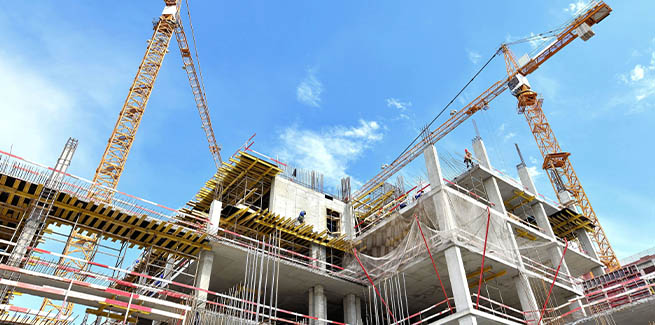The number of approved residential construction in Australia has plummeted, hitting its lowest figure in almost 18 months and the first decline since October last year.
According to the Australian Bureau of Statistics’ data on building approvals in Australia, there were a total of 12,916 total dwellings approved over the month of January, falling 27.9 per cent comparative to December and over 24 per cent compared to the same period last year.
This fall was observed almost across every state, with the decline being felt most distinctively in Victoria (-35.5 per cent), South Australia (-29.2 per cent) and NSW (-25.9 per cent).
The only state that reported monthly growth was Queensland, which saw a marginal increase of 0.5 per cent.
Driving this distinct loss in new dwellings, which is the lowest since June 2020 (12,724), was a dearth of apartments, town houses, and units, which fell 43.6 per cent month-to-month, hitting 4,007.
The same category of dwelling was said to be behind the uptick of approvals reported in December.
However, housing approvals were also reported by the ABS as suffering a sudden fall, hitting 8,712 over January and marking a monthly reduction of 17.5 per cent.
This again was observed across the country, with every state reporting a diminished approval figure, with NSW reporting the smallest decline (-14 per cent) and South Australia the largest (-19.9 per cent).
Compared to January 2021, this new figure for private houses reflects a downturn of 29 per cent.
Apartments, units, town houses and the like were reported to have a yearly loss of 8.5 per cent.
Speaking of the results, Housing Industry Association economist Tom Devitt said that there are “no indications that home building activity is facing weak demand any time soon”, suggesting instead that the drop in dwelling numbers could be attributed to the combination of staff shortages during the omicron outbreak and “a higher than usual uptake of holiday leave”.
“We anticipate an above average volume of approvals will be reported in coming months as the impact of this disruption fades,” he later added.
Mr Devitt said early indications are that “home building bounced back as the omicron wave abated and builders were able to return to work” and that “there are more homes under construction at present than in any previous cycle and this will continue to grow until mid-2022”.
“The elevated volume of homes approved, but not yet commenced construction, will ensure that January’s brief disruption won’t change builders’ busy schedule this year,” Mr Devitt said.
However, other economists previously made predictions that the previous uptick in construction may not last.
Speaking to Mortgage Business in January, ANZ senior economist Adelaide Timbrell speculated that one influencing factor could be the conclusion of the HomeBuilder initiative.
“We also know that because HomeBuilder brought forward a lot of housing projects; there are a lot of people who maybe usually would have started to build a home this year or next year that did it last year instead when they could have got HomeBuilder,” Ms Timbrell said.
“So all of those factors together do create a risk of building approvals falling further in the longer term.
“And eventually, once the cash rate actually starts to go up, that will hit people’s borrowing capacity even more, and that can reduce the ability of people to build new homes as well.”
[Related: NSW units drive uptick in dwelling construction approvals]
 ;
;